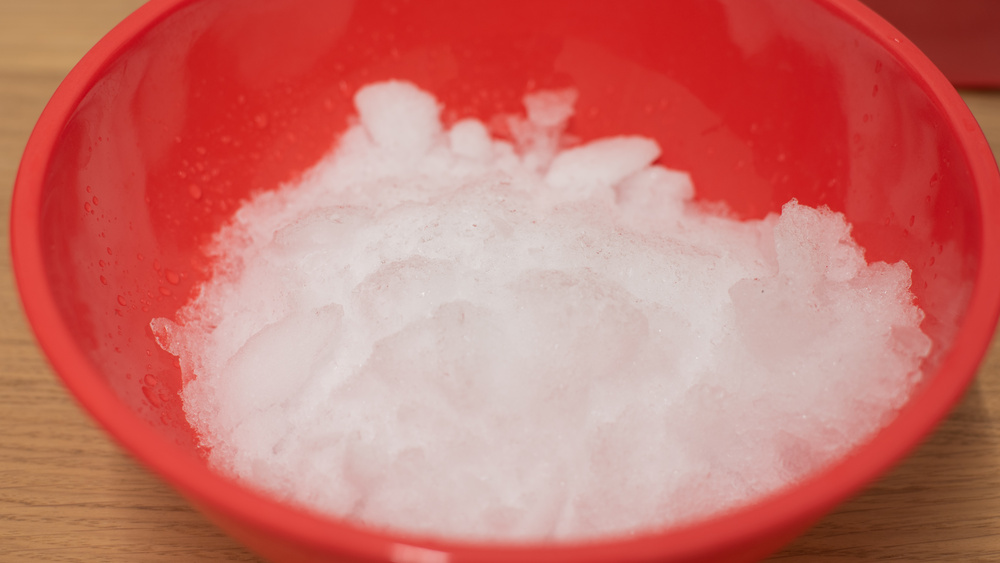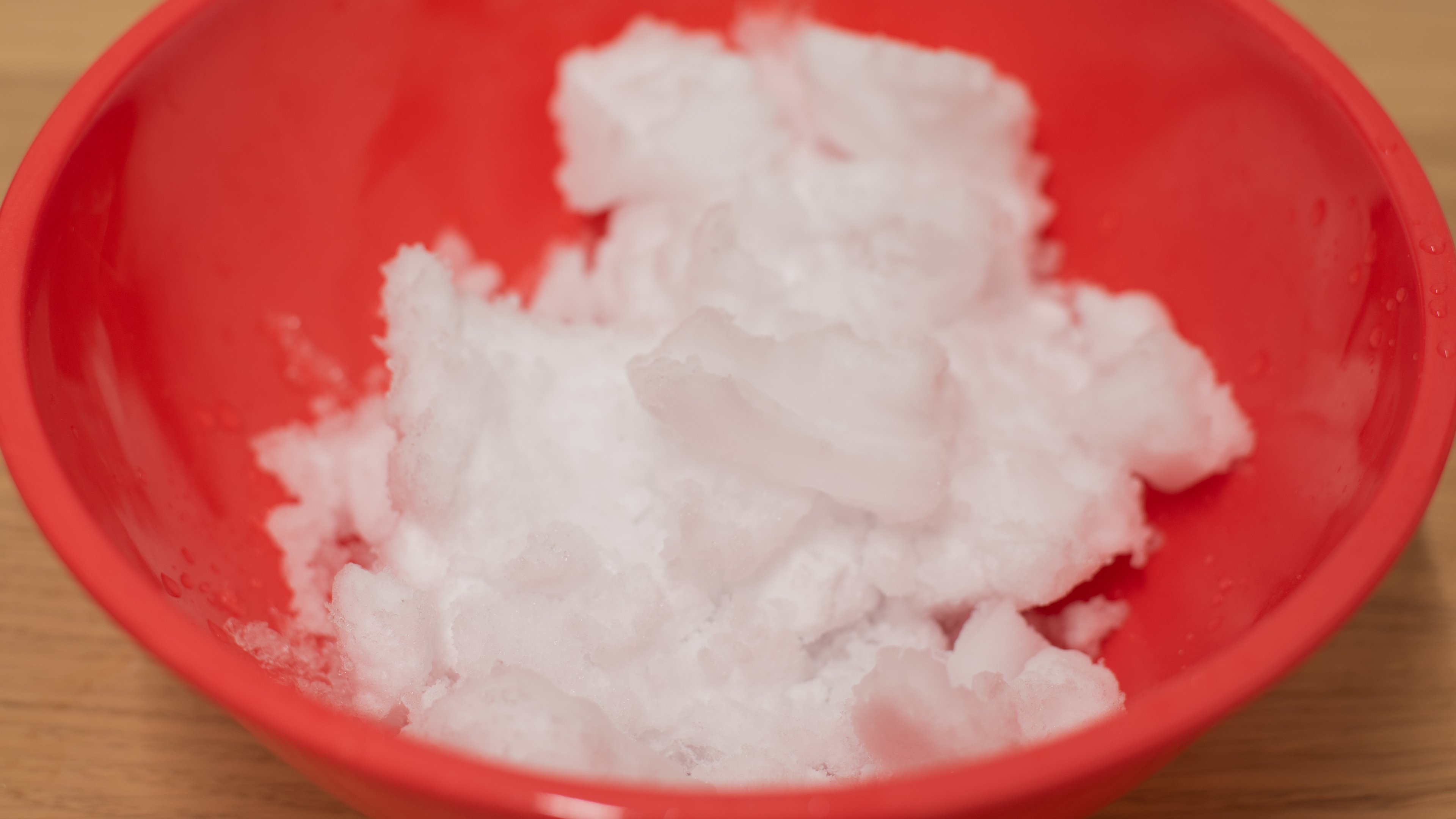- 30.0%Crushed Ice Preparation
- 70.0%Crushed Ice Texture
Crushed ice is a great addition to a cold drink on a hot day, but not every blender can handle the tough job of breaking down ice cubes. Some blenders are advertised for crushing ice, but several other types and designs can work very well for this purpose. Some blenders can create a snow-like texture, while others fail to crush the cubes at all. The results of this test can give you an idea of what you can expect if you use a particular model to blend ice on its own.
Test results
When It Matters
You may want a blender that makes snow-like or bar-quality crushed ice if you like to add it to cocktails, make blended drinks like slushies, or create icy desserts like snow cones. Since ice cubes are hard on the blender's blades, the results of this test can also give you an idea of how the blender may handle tough, bulky ingredients, like pieces of frozen fruit.
Our Tests
Before beginning the test, we check the user manual for any instructions about using the blender to crush ice. If the blender's manual says not to use it for that purpose, like the BELLA Rocket Blender, we don't perform the test, and we consider the blender to have failed it. We also don't do this test with blenders that are only intended to crush ice when it's mixed with a liquid, like the NutriBullet Blender Combo or the Magic Bullet Kitchen Express.
If there are no restrictions in the manual, we attempt to crush a total of 12 one-ounce ice cubes in the blender. With full-size blenders, we try blending all 12 at once; we then repeat the test with two batches of six and keep the best result. With personal blenders, we process three batches of four ice cubes each. Finally, when we're testing an immersion blender, we process four batches of three ice cubes. We follow any instructions in the manual about how much ice to add to the blender at once. For example, the KitchenAid Diamond's manual says to process six ice cubes at a time for the best results.
Also, if the manual specifies a mode or speed setting for ice crushing, we follow those instructions during the test. Otherwise, we use pulse mode if there is one. If there isn't a pulse mode, we run the blender at maximum speed in short bursts to simulate something like a pulse mode because it can help break up tough ingredients. Sometimes, ice builds up behind a blender's blades and causes them to jam, which happens most often with immersion blenders like the KitchenAid KHBV53. In that case, we rinse the blades under warm water before continuing with the test.
We use a stopwatch to time how long it takes to process the ice. Full-size and personal-size blenders fail this test if they can't crush ice cubes after five minutes. For immersion blenders, the test fails if the first three cubes don't crush within one minute.
We note the time it took for the blender to process the 12 ice cubes and check the blender for any unprocessed ice. We pour the crushed ice into a bowl for a picture, which we take using a standardized set-up, so the photos are easy to compare. We then assign the ice quality based on a subjective assessment of the processed ice.
We give the crushed ice a score between 0 and 10 based on the ice quality and the performance of other blenders to ensure consistency. Generally, blenders that make snow-like or bar-quality crushed ice receive a score between 7.5 and 10. Models that make 'okay' crushed ice tend to score between 6 and 7.5. A score below 6 corresponds to poor quality crushed ice, and we give blenders that fail to crush the ice or aren't for that purpose a 0.
Preparation Time
The preparation time refers to how long it takes in total for the blender to crush 12 ice cubes. We use a stopwatch to time the test and round the results to the nearest half minute. Out of our total passes, we take the best result as our final preparation time. That said, we consider anything less than a minute a good result. Full-size and personal-size blenders fail this test if they can't crush ice cubes after five minutes. For immersion blenders, the test fails if the first three cubes don't crush within one minute.
We always respect any maximum runtimes and suggested cooldown times listed in the manual. For example, the manufacturer of the NutriBullet Immersion Blender says not to use it to blend continuously for more than one minute at a time before the motor is allowed to rest. The preparation time result includes any cooldown periods as well as the actual blending time.
Ice Quality
For the ice quality result, we pick one of the following descriptors for the crushed ice that the blender produces: 'snow-like', 'bar-quality', 'okay', 'poor', 'failed to crush', or 'not intended use'.
Many blenders that make snow-like crushed ice are full-size blenders with a pulse mode, like the Vitamix A3300. Some also have a dedicated ice crushing mode, like the Ninja Mega Kitchen System BL770. The Ninja Foodi Power Nutri DUO is a personal blender that also makes snow-like crushed ice.
Blenders that make snow-like crushed ice usually score a 10 on this test, but some receive a slightly lower score because the ice they produce is a bit less fine or even-textured.
Bar-quality ice doesn't have the texture of real snow, but the texture is fine and uniform enough that you could use it in a professional setting: for example, in cocktails that call for shaved or crushed ice. Some immersion blenders, like the Bamix Mono M133, can make bar-quality ice, as well as personal and full-size models.
There's a wider range of scores for bar-quality ice than for snow-like crushed ice. The Ninja Nutri Ninja Auto-iQ makes extremely fine, evenly-crushed bar-quality ice that doesn't seem snow-like but still scores 10. On the other end of the spectrum, the Breville the Q's clumpy and unevenly crushed ice scores much lower.
Blenders that make okay quality crushed ice can process the ice cubes, but the crushed ice has a coarse texture that isn't suitable for making frozen drinks.
If the blender can't process all of the cubes or the texture is very coarse, the ice quality is poor. Immersion blenders like the Braun MultiQuick 9 and the KitchenAid Variable Speed Corded Hand Blender aren't ideal for ice crushing because it tends to get caught behind their blades. Those models both make poor-quality crushed ice.
If a blender fails to crush the ice, like the Vitamix Immersion Blender or the full-size Hamilton Beach Power Elite Multi-Function, we record the result for ice quality as 'Failed to Crush'.
What's Not Included
We don't add any liquid to the blender with the ice cubes or make frozen drinks with ice and other ingredients. Some blenders aren't intended to crush ice unless it's mixed with a liquid, and if that restriction is listed in the manual, we don't perform the test. Similarly, some blenders that do a poor job of crushing ice on their own may handle it better when it's added along with other ingredients, but we don't currently test for that. You can sometimes purchase blades and other accessories meant specifically for ice crushing separately, but these attachments are also not included in our testing. For example, you can buy a dedicated 'Ice Crusher Blade' for the Magic Bullet Blender MBR-1101 through the manufacturer's website.
Conclusion
If you want to use your blender to make crushed ice for drinks or desserts, you can look at the results of this test to see if a particular model can crush ice or not. If very fine, snow-like crushed ice is important you can also see the results and compare the ice quality.

























